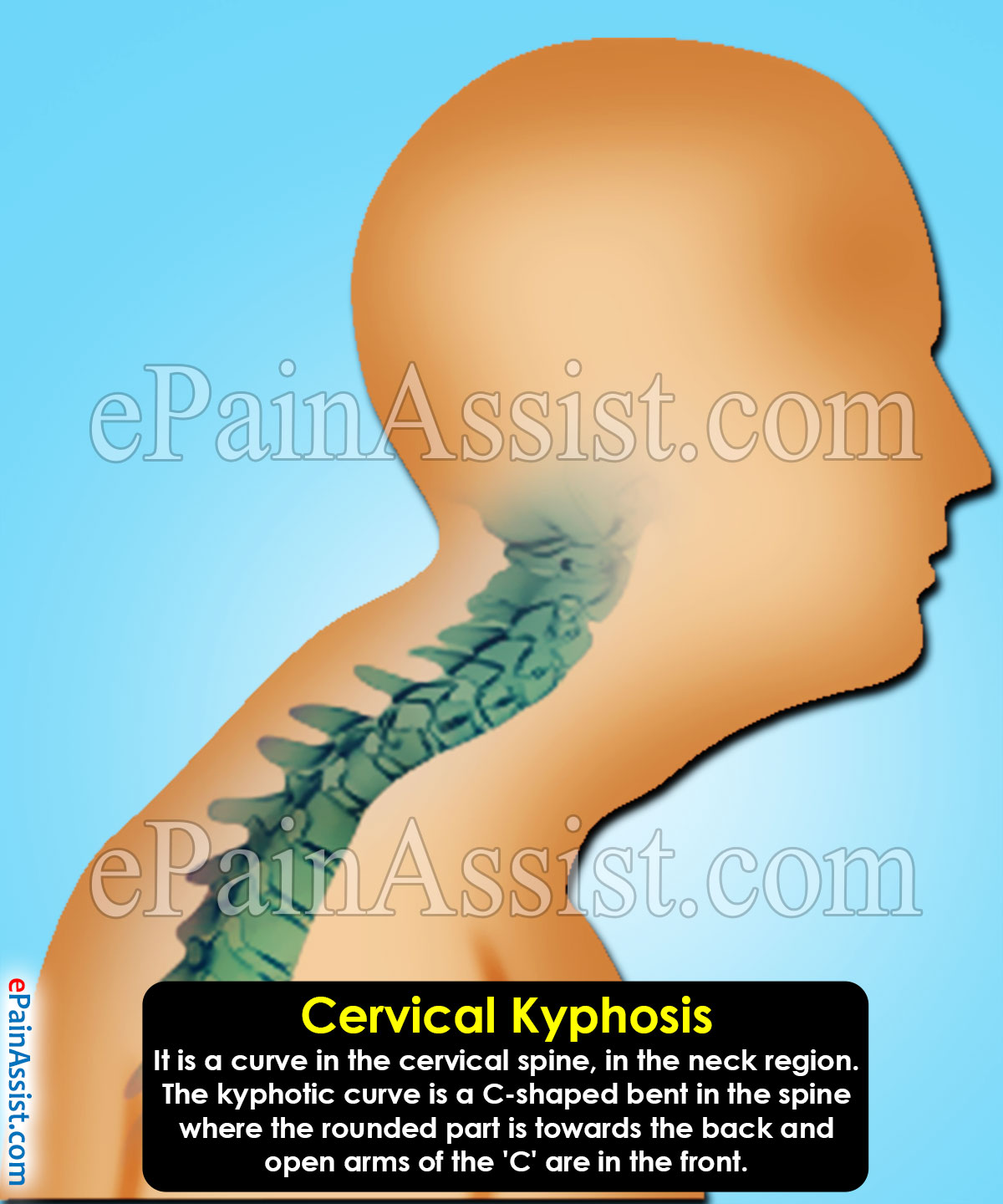Kyphosis is a term that describes a curve in the spine. Cervical kyphosis is a curve in the cervical spine, in the neck region. The kyphotic curve is a C-shaped bent in the spine where the rounded part is towards the back and open arms of the ‘C’ are in the front. The curve is opposite of lordosis and is also different from the normal curvature of the spine.
Causes of Cervical Kyphosis
Cervical kyphosis is a deviation from the normal cervical curve and usually results in undesirable symptoms. There can be various causes of cervical kyphosis and the severity of problem is generally related to the degree of kyphotic curve of cervical spine.

Some of the causes of cervical kyphosis include:
Cervical Kyphosis Caused due to Congenital Deformity – Some people may be born with a defect in the spine, like incomplete formation of spine, which can lead to cervical kyphosis. Improper formation and growth of spinal vertebrae can result in abnormal shape and structure and form a kyphotic curve in the neck. There may associated congenital defects in the other parts of the spine or other organs as well.
Cervical Kyphosis Caused due to Injury – Cervical kyphosis can occur after a traumatic event that results in vertebral fracture or injury to the soft tissues and ligaments in the cervical region. Injury can cause damage to the vertebrae; affect normal balance and arrangement of cervical spine. Strain and spasms of the surrounding muscles and ligaments can cause abnormal pulling of the cervical vertebrae and result in kyphosis.
Cervical Kyphosis Caused due to Disc Disease – Cervical disc disease can cause damage to the intervertebral disc leading to degeneration. Aging process and wear and tear of the vertebrae can cause discs to collapse and create a curve in the neck. This causes loss of normal cervical curve and results in cervical kyphosis.
Post-surgical – Cervical kyphosis can result after certain surgical procedures meant for the correction for other areas in the spine. Procedures done for laminectomy or cervical fusion can cause imbalance of cervical vertebrae, improper fusion or problems with vertebral alignment leading to cervical kyphosis.
Other Causes of Cervical Kyphosis – Other causes can include postural problems affecting cervical curvature, tumors around the neck, other medical conditions affecting the neck or certain treatment modalities like radiation therapy in the neck region.
Symptoms of Cervical Kyphosis
Complaints arising due to cervical kyphosis vary greatly from person to person and also depend on the degree of severity of abnormal curvature. People often experience difficulty in moving neck, looking up for extended periods resulting in restricted or compensated movements. There may be slight changes in the shape of the spine and it may be difficult to turn the neck to extreme sides.
Cervical kyphosis may be associated with symptoms of pain in the neck and in some cases, tensed muscles or damaged discs can exert pressure on the nerve roots and cause nerve related symptoms like burning pain or tingling sensation in the arms and hands. Cervical Kyphosis can also cause symptoms of weakness in arms, difficulty in performing activities, holding in one position for long and co-ordination difficulties.
Kyphotic deformity of cervical spine can cause stretching of the spinal column and can result in damage. This can affect normal functioning and severe problems can cause symptoms of weakness in limbs and loss of control, which requires immediate medical attention.
Diagnosis of Cervical Kyphosis
Cervical kyphosis can be identified with clinical examination and history. Imaging studies like X-Rays and scans usually help to determine the condition and the degree of abnormal curvature.
Treatment of Cervical Kyphosis
Treatment depends on the severity of the condition and the symptoms of affected person.
Medications to Treat Cervical Kyphosis: Medications are used to relieve pain, muscle spasms and inflammation associated with cervical kyphosis. Acute phases of pain in cervical kyphosis may be treated appropriately and rest is often advised.
Neck Brace for Cervical Kyphosis: A neck collar or a brace may be advised to support the neck muscles.
Physical Therapy for Cervical Kyphosis: PT to assist with correction of cervical posture, movement training and pacing of activities is recommended. Therapeutic exercises can help to reduce pain, strengthen neck muscles and improve range of motion. Pain may also be managed with warm and cold compresses.
Surgical Treatment for Cervical Kyphosis: Surgery may be considered in severe cases with persistent pain, progression of curve or when spinal cord compression is present and there is worsening of neurological problems.
Exercises for Cervical Kyphosis
Exercises for Cervical Kyphosis includes doing basic neck exercises that focus on improving range of neck movements along with neck strengthening exercises.
- Neck Flexion and Neck Extension Exercise for Cervical Kyphosis: Move neck up and down through a normal range slowly and comfortably.
- Neck Rotation Exercise for Cervical Kyphosis: Move the neck sideways from left to right as far as comfortable.
- Neck Side Tilt Exercise for Cervical Kyphosis: Maintain the head in neutral position then slowly tilt the head to one side as far as possible by bringing the ear towards the shoulder. Tilt the head but do not rotate the head. Maintain the head in optimum tilt position for brief period and bring the head to neutral position.
- Upper Spine Stretches: Stand with hands behind the head and bend your upper back to the left and then to the right, without bending the hips.
- Strengthening Exercises: Push your forehead behind and resist bending backwards by tightening neck muscles. Similarly push head forwards with hands and resist it from bending forwards. Do the same by pushing head from the sides and resisting the neck movement.
Also Read:
